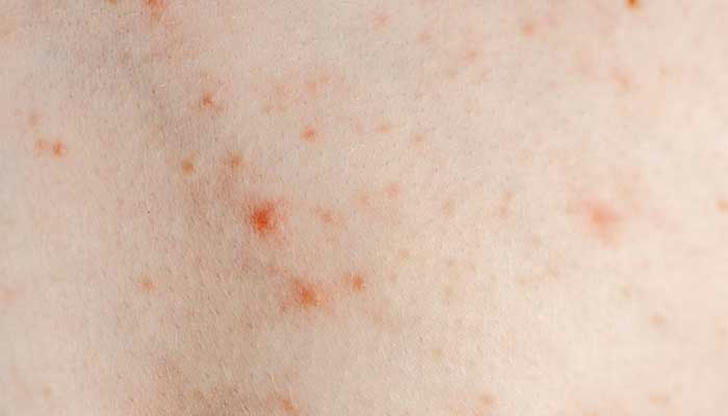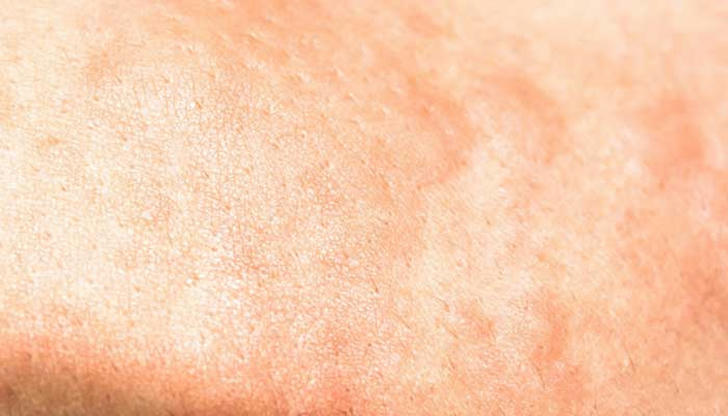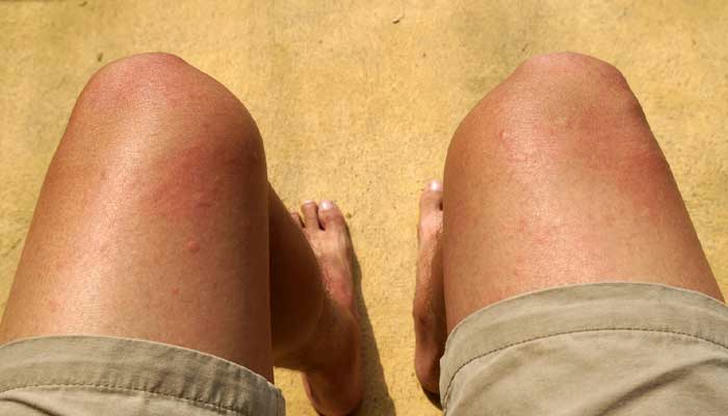How to Prevent the Itchy Hives?

There is a condition that can be triggered by exercise, sweating, getting caught in the rain, or exposure to cold winds, causing rashes all over the body accompanied by significant itching—it could be hives.
What are hives?
Hives, also known as urticaria, is a common allergic skin condition characterized by localized edema due to the dilation of small blood vessels in the skin and increased permeability. Some cases are related to allergies, while others have no identifiable cause.
About 30% of people experience hives at least once in their lifetime, with chronic hives lasting 2 to 5 years. Some individuals may have such severe itching that it disrupts their sleep or wakes them up.
All hives start as acute, but if the condition lasts longer than 6 weeks, it is termed chronic hives, with patients experiencing recurring symptoms such as:

Wheals
Often beginning with skin itching, raised, red or skin-colored wheals appear. These wheals vary in size and shape, some appearing singly and others in clusters. Hives are often very itchy, but you might also feel burning or stinging.
Most wheals resolve on their own within 24 hours, with the majority disappearing quickly within 1 to 2 hours, and the skin returns to normal.
Angioedema
Some individuals may also develop angioedema, characterized by sudden swelling of the dermis or subcutaneous tissue, accompanied by itching and pain. Angioedema can last longer, up to 72 hours.
Systemic symptoms such as fever Severe cases of hives may also present with systemic symptoms like fever, nausea, vomiting, abdominal pain, diarrhea, chest tightness, respiratory obstruction, and in some cases, difficulty breathing or suffocation.
If a patient with hives experiences fever and difficulty breathing, they should seek immediate attention in the emergency department of a hospital.
What causes hives?
Mast cells in the human body are the primary effector cells responsible for causing hives, extensively distributed around the microvessels in the skin and the mucosa of internal organs, and possess potent immune regulatory functions.
In individuals with hives, mast cells can be activated through various mechanisms, releasing substances such as histamine, tryptase, interleukins, and leukotrienes, leading to wheals, edema, and itching.
Therefore, the causes of hives are quite complex and can be broadly divided into two main categories based on their origin:

Exogenous factors of hives
Exogenous causes are often transient and include:
Physical factors: such as friction, pressure, cold and heat stimuli, sunlight exposure, etc.;
Food: consuming foods like fish, shrimp, eggs, mangoes, alcohol, and/or food additives;
Medications: taking potentially allergenic drugs;
Contact with other allergens: inhaling pollen, animal dander, dust, dust mites, volatile chemicals, and other allergens.
Endogenous factors of hives
Endogenous causes are typically persistent and include:
Infections: chronic hidden infections by certain microorganisms (such as Helicobacter pylori infection, which may be a factor in a minority of patients);
Fatigue and mental stress;
Chronic diseases: such as systemic lupus erythematosus, thyroid diseases, lymphomas, inflammatory bowel disease, etc.
As can be seen, cold, heat, exercise, and even water and sunlight could be inducing factors, making it difficult for patients to completely avoid them.
How can I prevent hives?
To avoid such hives, you can start with the following details:
1. Record Trigger Factors
To identify the cause, you can develop the habit of recording the food you eat, medications taken, and changes in the surrounding environment every day. In case of an outbreak of hives, you can refer to the records to find potential allergens.

2. Allergy Testing
Patients with hives may consider allergy testing, but for some, it can be challenging to find the direct cause. However, allergy testing has its limits and cannot test all suspicious factors encountered in your daily life.
3. Avoid Certain Foods
Refrain from consuming excessive amounts of histamine-rich foods, such as eggs, shellfish, cheese, cured meats like ham, certain vegetables (including tomatoes and tomato sauce, spinach, peas), fruits (such as mangoes, kiwis, bananas), pastries and ice cream containing chocolate and cocoa, and candies. If you have a known allergy to specific foods, it is necessary to avoid them.
4. Maintain Emotional Stability
Mental stress can trigger hives. Avoid staying up late and negative emotions such as tension, anxiety, and depression. Keep a good mood and don't put too much pressure on yourself.
5. Avoid Extremes of Cold and Heat
Rest well, avoid vigorous activities, and do not expose yourself to extremely hot or cold environments. Do not use water that is too hot for bathing. Wear loose and comfortable clothing, preferably made of cotton, and minimize the use of synthetic materials.

6. Ventilate Indoors Regularly
Dust, animal dander, dust mites, smog, and other allergens require attention to indoor and outdoor hygiene and frequent ventilation. Try to avoid crowded places with many people and animals.
7. Seek Medical Help
If deeply troubled by hives, seek help from a dermatologist or an allergist. They can not only identify potential infectious or drug factors that may trigger urticaria but also screen for thyroid diseases or other autoimmune diseases that may coexist with urticaria.
